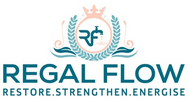
Reverse Osmosis in Wastewater Treatment: A Practical Guide
Ever wonder how dirty water gets a glow-up? The short answer: reverse osmosis! It’s the superhero of wastewater treatment—zapping nasties and saving water while keeping regulators happy. While our Reverse Osmosis: The Ultimate Guide to Water Purification explores the core technology and home benefits, keep reading here to see how this process is making waves in UK industries, from large-scale factories to specialised fish tanks.
Role of Reverse Osmosis in Wastewater Management
Ever looked at murky water and thought, “There’s no way that’s getting reused”? Well, reverse osmosis (RO) says otherwise—and it's doing just that across the UK. Think of RO as the unsung hero of wastewater treatment. It quietly steps in, scrubs water clean at a molecular level, and gives it a second shot at life. Whether it's helping factories reuse what they flush or cutting down on pollution in cities, RO has become a must-have in modern water management. With tougher environmental rules and water supplies under pressure, this tech isn’t just helpful—it’s essential.
Mechanism of RO in Treating Wastewater
Here’s how it works—imagine pushing dirty water through a membrane that only lets the good stuff through. RO uses pressure to force water through this super-fine barrier, trapping all the unpleasant extras like salt, bacteria, and industrial chemicals. Only the clean water molecules make it to the other side. It’s like trying to push a muddy puddle through a tea strainer and ending up with Evian. Okay, maybe not quite that posh—but pretty close. That’s why it’s perfect for places where water purity really matters.
Efficiency and Effectiveness
What makes RO so effective? For starters, it can remove up to 99% of contaminants. That’s not just good—it’s incredibly efficient for large-scale water systems. Factories, farms, and local councils are turning to RO because it works and keeps working. And with clever upgrades like smart sensors and low-energy pumps, today's systems do more with less. It’s a win-win for both the planet and your water bill.
Case Studies and Applications
This isn’t just science on paper—it’s happening right now across the UK. Let’s look at where RO is already making waves.
Industrial Wastewater Treatment
Up in Yorkshire, a major food producer faced sky-high wastewater disposal costs. Their solution? Installing RO systems. They ended up slashing those costs by 40% and reused the cleaned water for things like cooling machinery and washing equipment. Not bad for what used to be waste. Across the country, pharmaceutical plants are using RO too—keeping harmful chemicals out of the environment while sticking to strict discharge rules.
Municipal Wastewater Reuse
Cities are getting smarter with their water too. In London, Manchester, and beyond, local councils are using RO to recycle wastewater on a massive scale. Take Thames Water’s Slough facility. It treats 98% of its wastewater using RO and sends it off for agricultural reuse. That’s millions of litres that would’ve gone down the drain—now helping farmers instead. With climate change tightening the taps, this kind of smart reuse is more important than ever.
Benefits and Challenges
No solution is flawless—but RO gets pretty close. Let’s break down what it does well, and where there’s still room to improve.
Advantages of Using RO
-
High Purity: Removes bacteria, viruses, salts, metals—you name it.
-
Water Reuse: Perfect for irrigation, industrial use, or even drinking (after extra treatment).
-
Meets Regulations: Helps tick the boxes on strict environmental standards.
-
Supports Sustainability: Cuts back on freshwater use and boosts circular economy goals.
It’s like giving every drop of water a new job instead of letting it retire early.
Potential Limitations and Solutions
-
Energy Use: Yes, RO needs power—but modern pumps with smart controls are slashing usage.
-
Membrane Fouling: Filters can clog, but regular cleaning and proper pre-treatment keep things flowing.
-
Brine Disposal: The salty by-product can be tricky, but techniques like evaporation ponds or advanced brine management are stepping up.
The challenges are real—but so are the fixes. Innovation is keeping RO ahead of the curve.
Conclusion, Future Prospects in Wastewater Treatment
RO isn’t just a clever piece of kit—it’s reshaping how we think about water waste in the UK. Whether it's in factories, farms, or city centres, reverse osmosis helps us clean, reuse, and rethink our water. And the future? It’s looking bright. With AI-powered sensors, longer-lasting membranes, and more energy-efficient systems on the rise, RO is becoming even more accessible. As we chase down climate goals and sustainable living, expect to see RO systems pop up in even more places. After all, in a world where every drop counts, reverse osmosis just might be the mate we all need.
More Reverse Osmosis info we think you'll love
Reverse Osmosis Advantages and Disadvantages
Reverse Osmosis vs Bottled Water
Reverse Osmosis vs Water Softener
Reverse Osmosis vs Alkaline Water
Can Reverse Osmosis Remove Fluoride?
Is Reverse Osmosis Water Safe to Drink?


Leave a comment